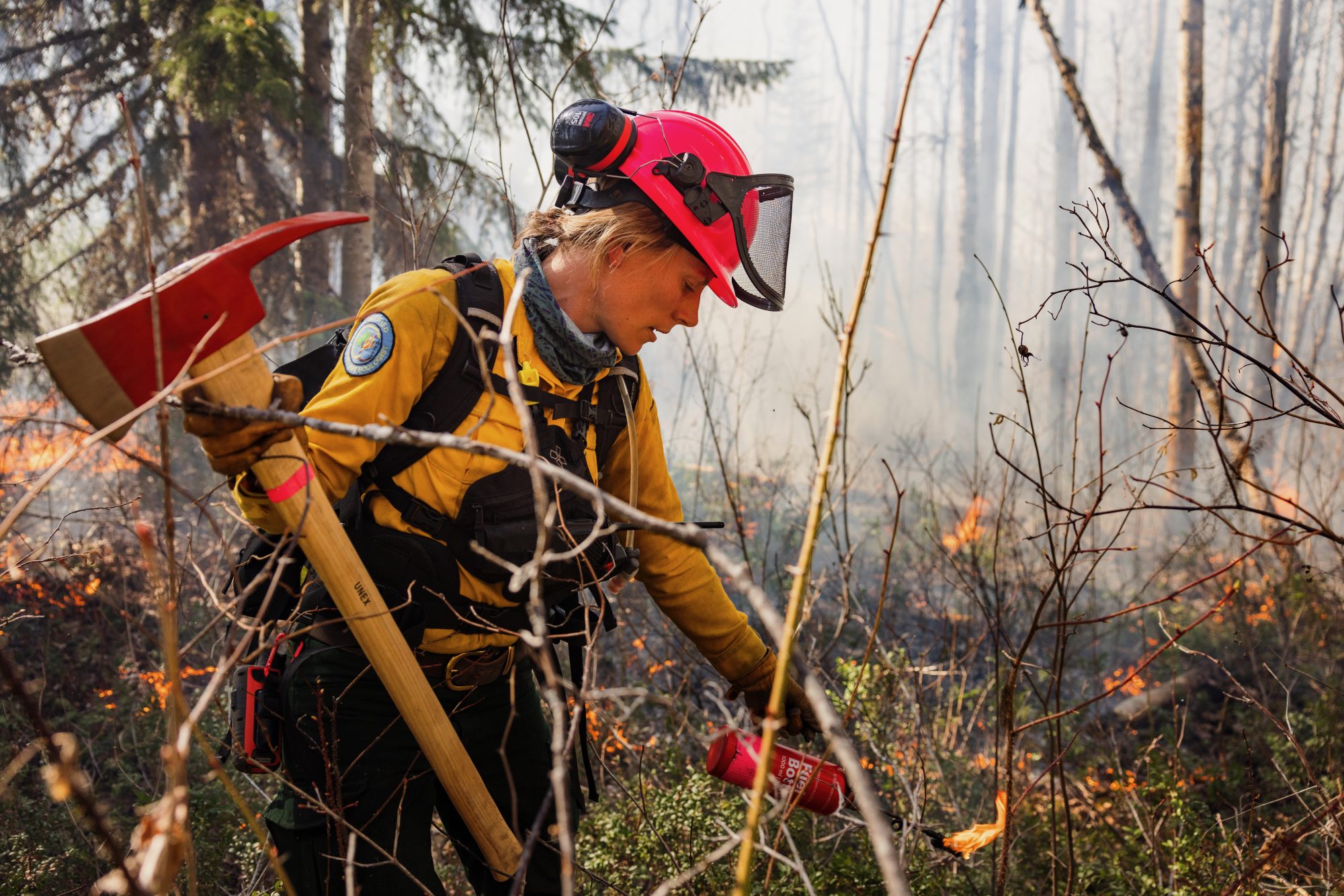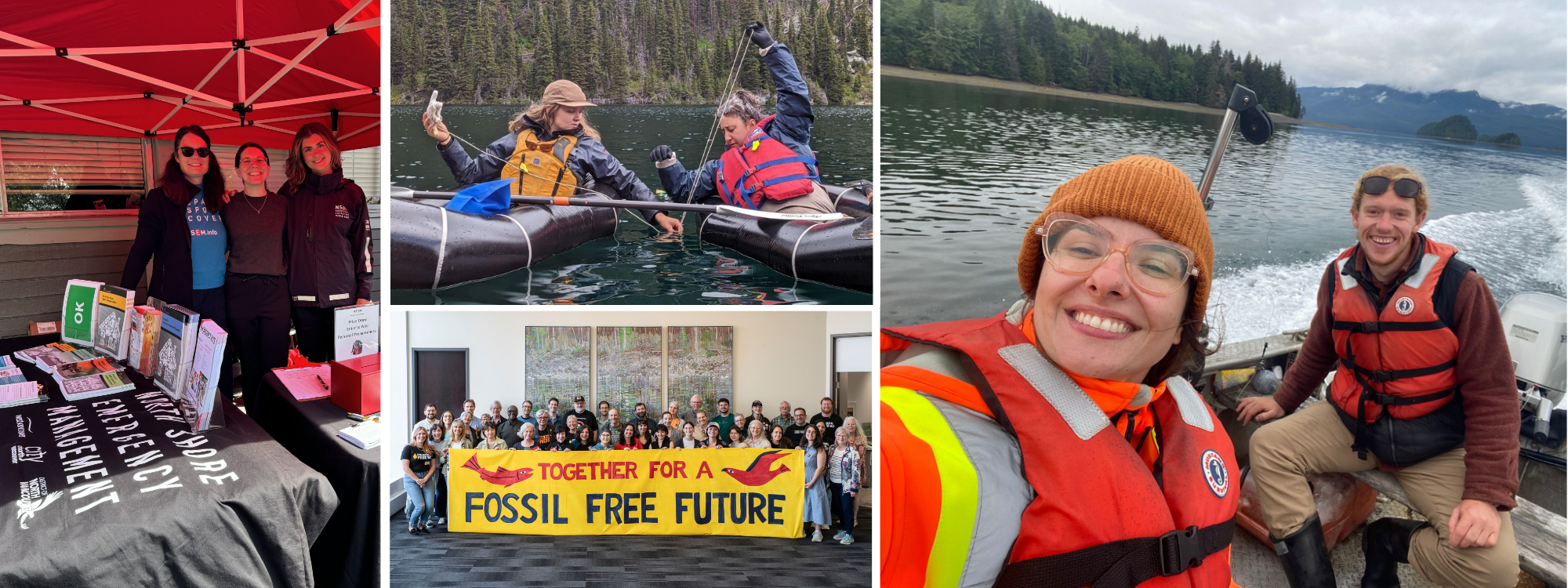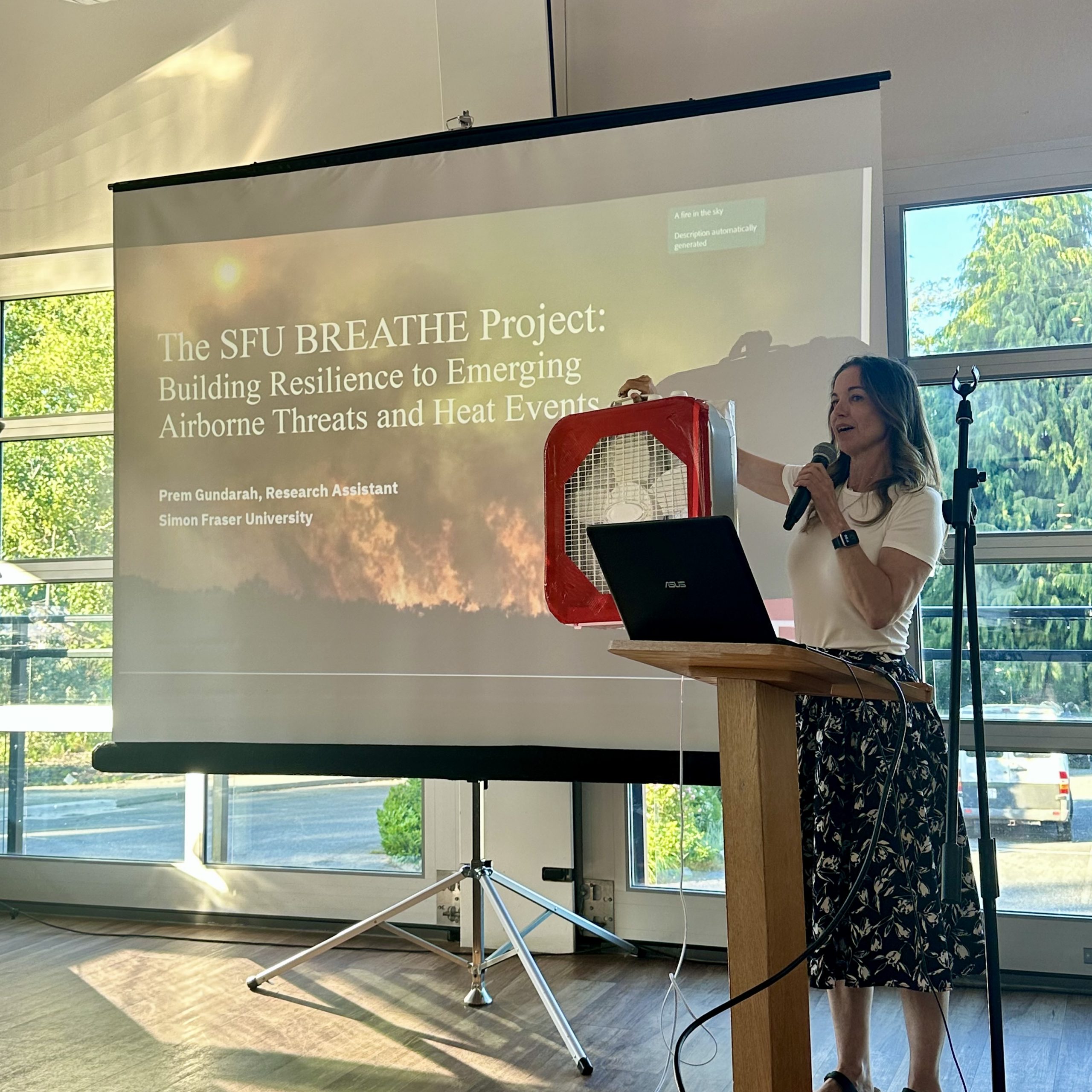With wildfire seasons becoming longer and more impactful, the need for collaboration across different knowledge systems increases, but how do we bridge the gaps between communities, science, and policy? This is where boundary spanners come in—people who connect diverse groups to ensure knowledge is shared and applied respectfully and effectively. In this Q&A, we sit down with Dr. Kira Hoffman, a fire ecologist and practitioner whose research focuses on integrating and celebrating fire knowledge to improve fire management. Through her PICS-funded project, Hoffman and her co-researchers at the Gitanyow First Nation explore how Indigenous fire stewardship can increase biodiversity, buffer against wildfire, and protect cultural values. The project aims to revitalize traditional fire practices in the Gitanyow territory, combining fire data with Indigenous Knowledge to strengthen community-led stewardship and ecosystem resilience.
Thank you, Dr. Hoffman, for sitting down with us.
Today, we’re going to cover the concept of a boundary spanner—a concept you and Dr. Kelsey Copes Gerbitz explored in a 2024 paper. Could you explain what exactly a boundary spanner is, and what they do?
Dr. Hoffman: Think of a boundary spanner as someone who helps different organizations work together. In relation to fire management, they might organize collaborative workshops, build training programs, create communication tools, or support knowledge exchange between Indigenous firekeepers, communities, and fire agencies. Their work ensures that Indigenous knowledge and science supports the return of fire to landscapes that have experienced over a century of fire exclusion. This person could be a fire practitioner (someone who plans and takes part in prescribed/and or cultural fire) or a community champion who brings organizations together to build collective capacity.
Why should organizations invest in boundary spanning to improve wildfire resilience?
Dr. Hoffman: Wildfire management is a complex challenge that requires collaboration between many different groups—scientists, policymakers, Indigenous communities, land managers, and the public. The problem is that these groups often have different knowledge systems, priorities, and ways of communicating. This is where boundary spanners come in. They act as connectors, helping to bridge these gaps so that knowledge can be shared, understood, and applied in ways that make fire management more effective and equitable.
A part of your PICS project is supporting the return of cultural and prescribed fire to landscapes and territories. Could you explain the difference between these fire management practices and how boundary spanning relates to them?
Dr. Hoffman: Cultural burning is a traditional practice Indigenous peoples and communities have used for millennia in what is now known as B.C. It involves intentionally setting fires (sometimes small patches and sometimes large areas) to maintain healthy landscapes, encourage biodiversity, and support cultural and ecological values. These burns help clear away dead vegetation, promote the growth of important species, and reduce the risk of large, destructive wildfires. Unfortunately, colonial fire suppression banned these practices in the 1930s, leading to the build up of almost a century of dense and flammable material across many ecosystems.
Prescribed fire also consists of carefully applying controlled fire to reduce wildfire risk, restore ecosystems, and improve forest health. While both approaches involve intentional burning and monitoring, cultural burning is deeply tied to Indigenous knowledge, traditions, and intergenerational knowledge transfer. This knowledge and associated practices belong to Nations.
Both approaches require public trust and multi-sector collaboration to succeed. Boundary spanners can help build trust between sectors involved in fire management. They ensure that fire management strategies include diverse perspectives and meet the needs of regions and local communities.
Can you share an example of boundary spanning in action?
Dr. Hoffman: A great example is the Wildland Fire Ecology and Management (WFEM) program at UBC Okanagan. This came about when a group of researchers, First Nations, government officials, and industry experts realized that fire training wasn’t doing enough to integrate Indigenous science and knowledge into fire management. Realizing this was a gap, they created the WFEM program, offering cross-cultural training on fire ecology in Western Canada and helping people learn and build a well-rounded approach to fire management. This course helps train fire practitioners on how to integrate boundary spanning activities and insights into their work.
Another example is the B.C. Wildfire Service’s partnership with local artists and First Nations communities to host community-based art sessions in the Cariboo region. These art sessions focused on fire storytelling and cultural burning. The sessions were held in three communities and helped participants express their personal connections to fire through art. More importantly, they created a space for meaningful conversations about where cultural burns could happen, the values tied to fire, and how to build capacity for First Nations fire crews. This is a perfect example of a boundary spanning activity that helped the B.C. Wildfire Service understand the Indigenous values, knowledge, and science associated with cultural burning.
What are some challenges boundary spanners face?
Dr. Hoffman: One of the biggest challenges is that their work is often undervalued. Boundary spanning is sometimes seen as an ‘extra’ task rather than an essential role. Many people who act as boundary spanners—whether in government, research, or community settings—do it on top of their regular responsibilities. If we want to improve fire management and shift to more proactive fire engagement, we need to formally recognize, support, and fund these positions.
Given the increasing impact of wildfire seasons, is there growing momentum for boundary spanning?
Dr. Hoffman: Yes, definitely. Recent wildfire seasons have shown the urgent need for new approaches, and there’s more public and political support for proactive fire management. This shift has opened funding opportunities and new collaborations. Investing in formal training programs and dedicated boundary spanning roles will ensure that we have the expertise to navigate increasingly complex wildfire seasons. Without these positions, we risk losing valuable knowledge and missing opportunities to improve fire management in Canada.
What’s the key takeaway for organizations or projects considering boundary spanning?
Dr. Hoffman: If you want to improve fire management, you need boundary spanners. Their ability to bring together different knowledge systems, build trust, and facilitate collaboration is critical. Investing in these roles isn’t just beneficial—it’s necessary for tackling the complexities of fire, now and in the future.



